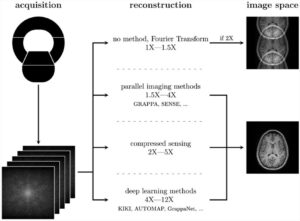Across all medical disciplines, artificial intelligence (AI) and machine learning will transform medicine beyond most people’s imaginations. Algorithms that help evaluate radiological images are just the beginning. AI could become an indispensable tool across all branches of medicine.
From virtual assistants in the living room to intelligent investment algorithms and from software-based traffic control to autonomous driving, there is no escaping artificial intelligence and machine learning. The topic is also currently being addressed at the political level. China presented its Next Generation Artificial Intelligence Development Plan as far back as July 2017. In March 2018, French President Emmanuel Macron announced that his government would invest a total of €1.5 billion in AI by 2022. In April 2018, the British government launched its £1 billion AI Sector Deal policy paper. In May, it was Sweden’s turn. The German government unveiled its AI strategy at the end of 2018. At the European level, the European Commission formulated a European AI Strategy in April 2018, setting out the draft European AI ethics guidelines a year later.
Practical uses for AI thanks to increased computing power
The advance of AI can be seen in medicine, as well. From prevention and screening to diagnosis, therapy, and disease management, innovative companies and technology-oriented medical institutions have been developing, testing, and – increasingly – implementing intelligent algorithms in virtually every branch of medical care. At the same time, regulators are turning their attention to the topic. In February 2019, the U.S. Food and Drug Administration (FDA) released a discussion paper regarding the licensing of AI applications for medicine. It is not concerned with ‘simple’ applications that are trained and re-trained during updates – such solutions already exist and have regulatory approval. Rather, the new FDA initiative concerns more sophisticated AI systems that learn in real-time and are constantly changing their algorithms, requiring them to be regulated differently from traditional software solutions.
Read the full article here.













